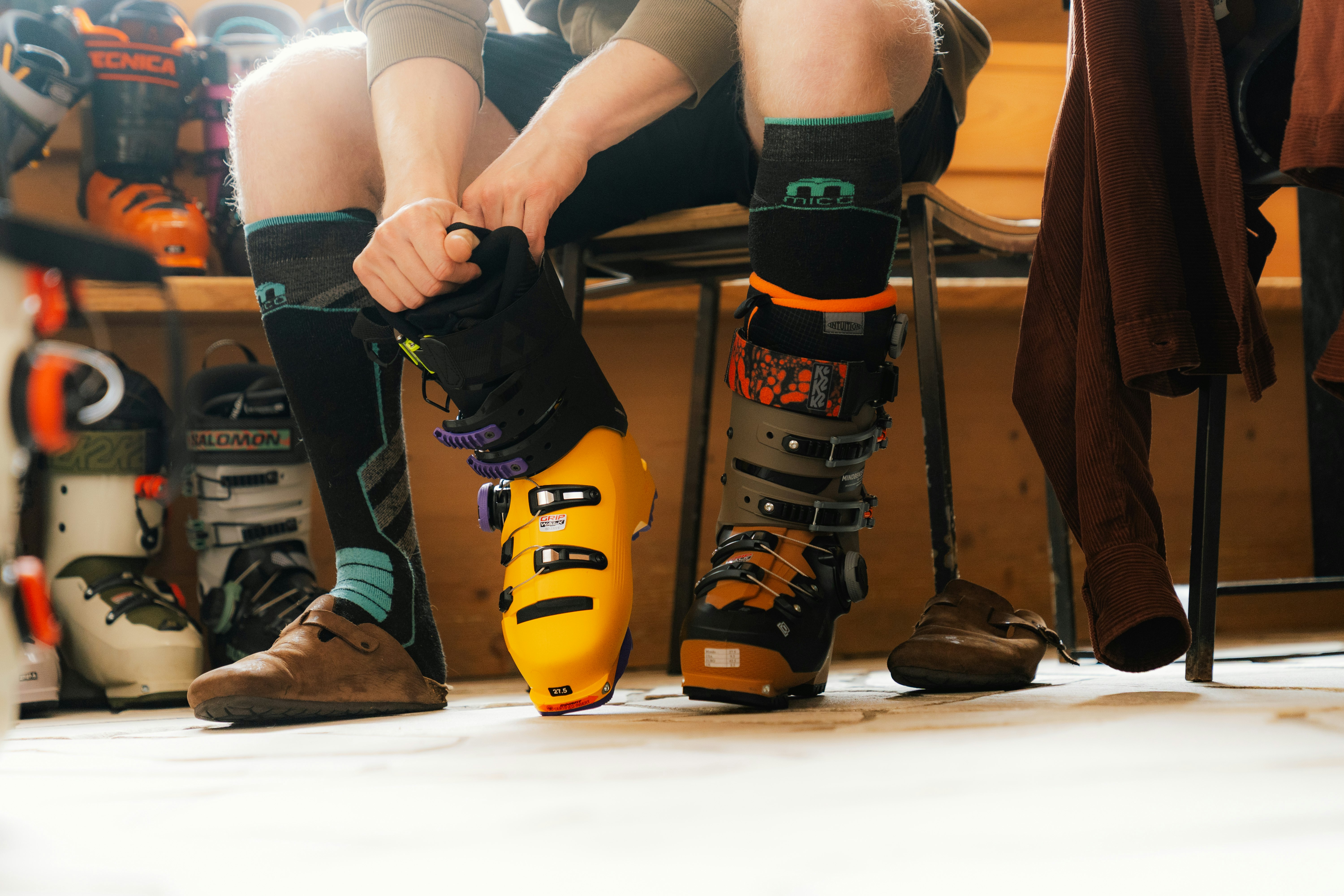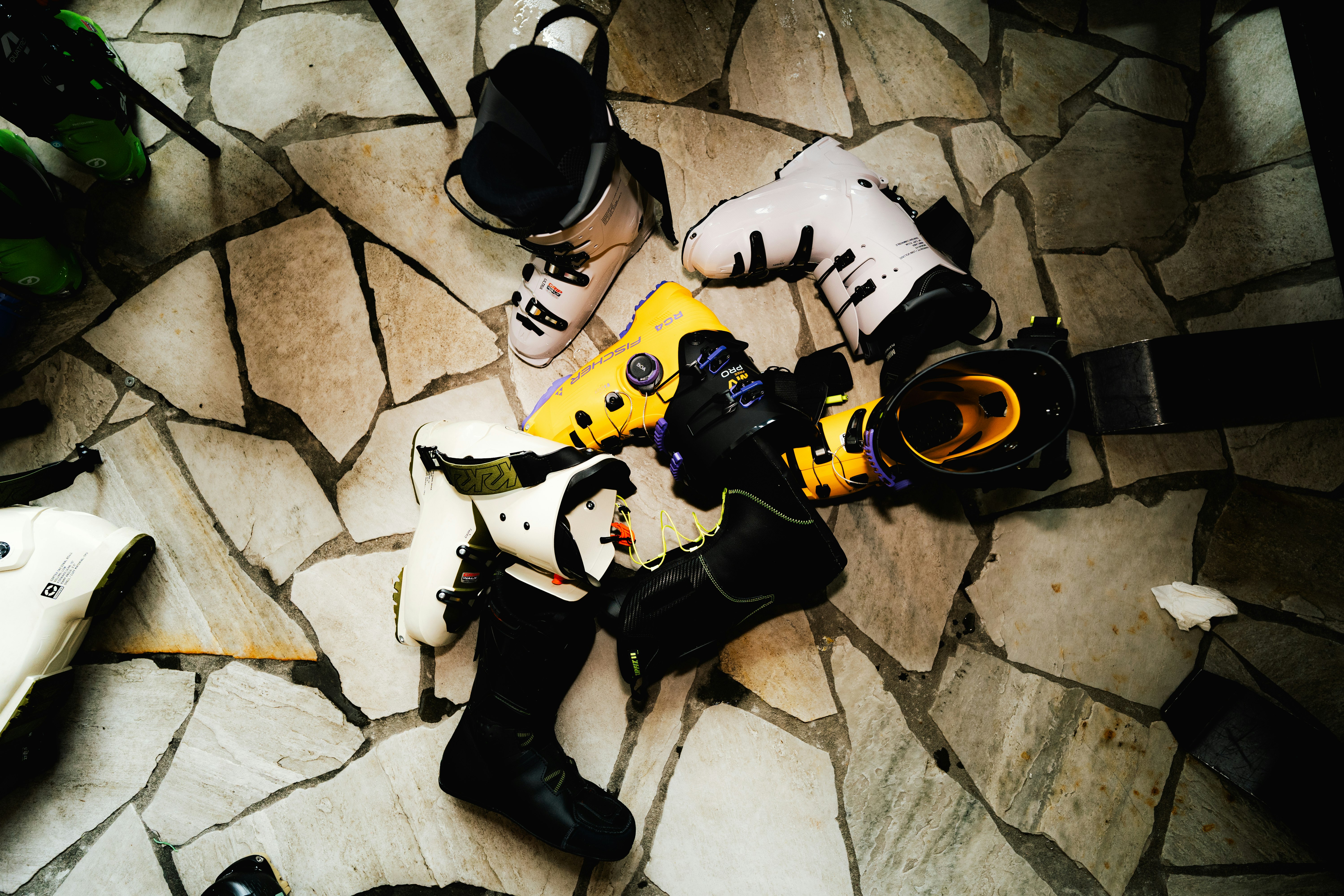Two main trends in the last few seasons have revolutionized the world of freeride boots. That doesn’t make them a definite sign of things to come, but almost all models on the market feature at least one.
What are they? The addition of a BOA dial and the removal of the ski/walk mechanism. Was that really necessary? Difficult to say, only time and the market will tell if these new directions will be successful. It’s clear that the BOA is not just popular with designers, but also with the public. Usually found on the shell, initially it was introduced to better support narrow feet, but they’re now being used on some medium-volume models. Regulating left and right boots equally takes a little getting used to. While there is an approximate system to help you know how much you’ve tightened it, it’s more about instinctively knowing when it feels right. The bolder move, however, was the decision by many brands to remove the ankle lock on some of their freeride models. It’s not hard to see why, as it requires more complex design and construction, to the detriment of rear support, and more generally, the flex pattern. The latter is the cornerstone of the entire boot-shell-cuff system, on which in turn the physics of the ski is based, as it determines the efficiency of energy transfer to the ski.

But this choice creates a further split. On one hand, the boots that are still designed for elevation gain and skinning uphill to the peak, prepared to shoulder the responsibility of such a trade off. On the other, the complete absence of compromise. Abandoning the ease of being able to move the ankle more freely when walking, to cater to that small group of riders who really just want to use the lifts or bootpack short distances. It’s almost a return to the past, when freeride boots, still in their infancy, weren’t designed for walking.

Paradoxically though, they do have pin inserts. So are they for walking or not? While walkability isn’t great, in theory, top pro athletes who don’t want to compromise on downhill performance will use them anyway. It’s a shame that in terms of stiffness they don’t measure up to certain alpine race boots, which are often used by freeride champions as those designed for the mass market don’t have the flex they need. It remains to be seen which way the public will go, the only thing we can be sure of is that we’ve entered a new era, one that involves making a conscious, informed choice based on what you want to achieve.
Share this article

